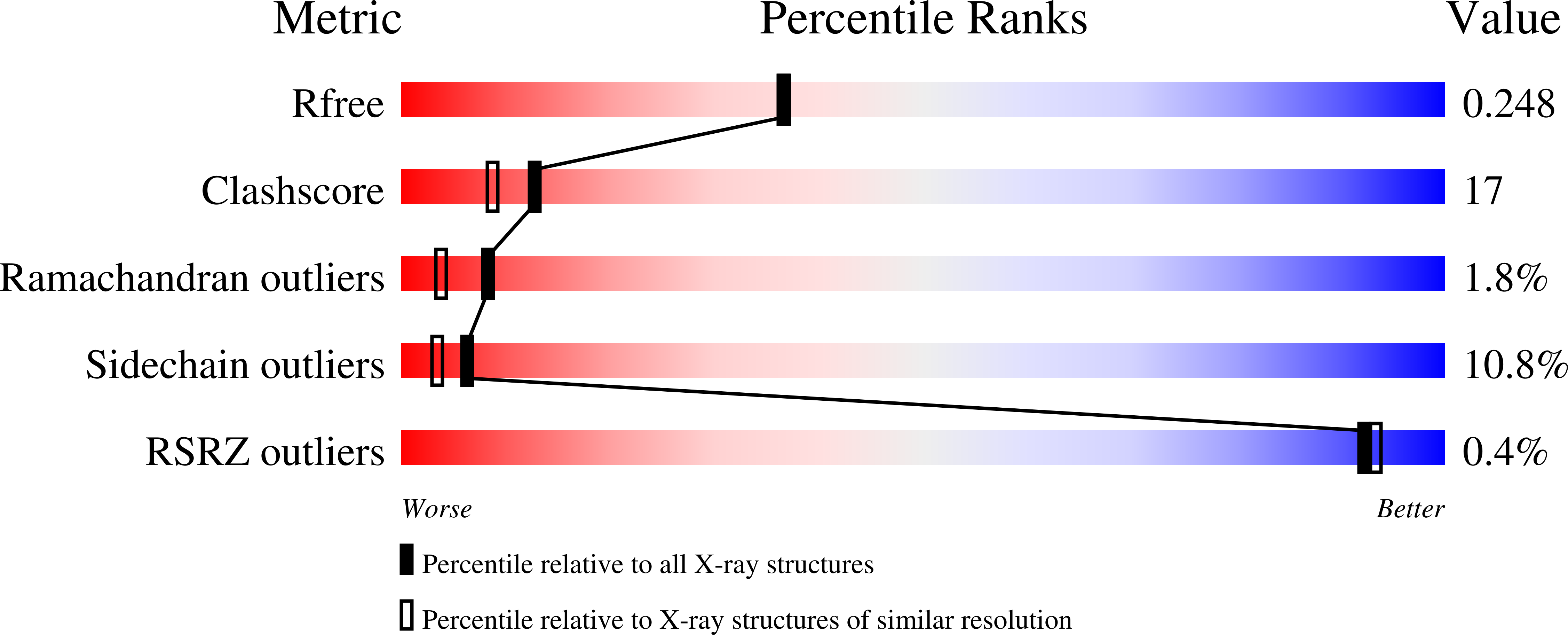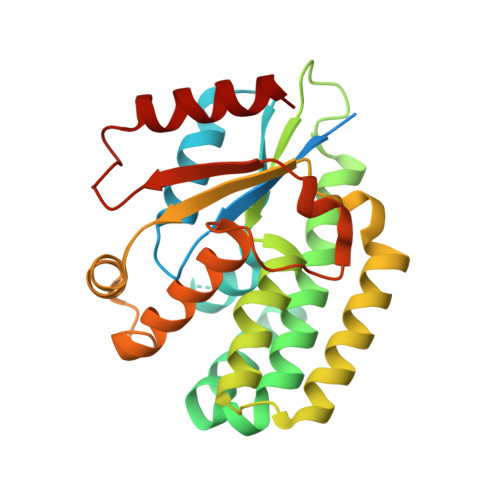Co-targeting of convergent nucleotide biosynthetic pathways for leukemia eradication.
Nathanson, D.A., Armijo, A.L., Tom, M., Li, Z., Dimitrova, E., Austin, W.R., Nomme, J., Campbell, D.O., Ta, L., Le, T.M., Lee, J.T., Darvish, R., Gordin, A., Wei, L., Liao, H.I., Wilks, M., Martin, C., Sadeghi, S., Murphy, J.M., Boulos, N., Phelps, M.E., Faull, K.F., Herschman, H.R., Jung, M.E., Czernin, J., Lavie, A., Radu, C.G.(2014) J Exp Med 211: 473-486
- PubMed: 24567448
- DOI: https://doi.org/10.1084/jem.20131738
- Primary Citation of Related Structures:
4KCG - PubMed Abstract:
Pharmacological targeting of metabolic processes in cancer must overcome redundancy in biosynthetic pathways. Deoxycytidine (dC) triphosphate (dCTP) can be produced both by the de novo pathway (DNP) and by the nucleoside salvage pathway (NSP). However, the role of the NSP in dCTP production and DNA synthesis in cancer cells is currently not well understood. We show that acute lymphoblastic leukemia (ALL) cells avoid lethal replication stress after thymidine (dT)-induced inhibition of DNP dCTP synthesis by switching to NSP-mediated dCTP production. The metabolic switch in dCTP production triggered by DNP inhibition is accompanied by NSP up-regulation and can be prevented using DI-39, a new high-affinity small-molecule inhibitor of the NSP rate-limiting enzyme dC kinase (dCK). Positron emission tomography (PET) imaging was useful for following both the duration and degree of dCK inhibition by DI-39 treatment in vivo, thus providing a companion pharmacodynamic biomarker. Pharmacological co-targeting of the DNP with dT and the NSP with DI-39 was efficacious against ALL models in mice, without detectable host toxicity. These findings advance our understanding of nucleotide metabolism in leukemic cells, and identify dCTP biosynthesis as a potential new therapeutic target for metabolic interventions in ALL and possibly other hematological malignancies.
Organizational Affiliation:
Department of Molecular and Medical Pharmacology; 2 Ahmanson Translational Imaging Division; 3 Department of Biomathematics; 4 The Pasarow Mass Spectrometry Laboratory, Department of Psychiatry and Biobehavioral Sciences and the Semel Institute for Neuroscience and Human Behavior; 5 Department of Biological Chemistry; and 6 Department of Chemistry and Biochemistry, University of California, Los Angeles, Los Angeles, CA 90095.
















